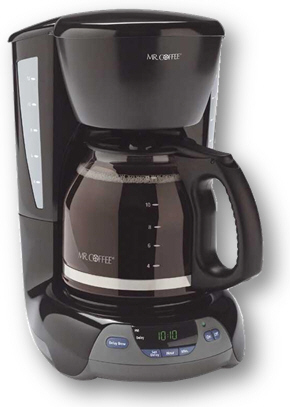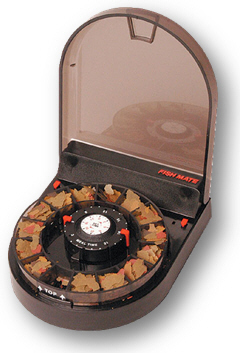Smarter Homes for Home Healthcare

Smart home technologies can anticipate needs and make tasks easier or automatic. They’re not just about high-end new homes, proprietary technologies, and professional installation. They’re about comfort, convenience, entertainment, energy management, communications, pet care, surveillance, and security & health monitoring. And you can often install them yourself, starting with the simplest of applications.
Your Coffeepot – I bet, if you look around, you’ll find many home automation products in your home already, so this technology really is not scary. The purpose of my article here is to get you thinking how smart home technologies can help with home healthcare.
My Perspective – I was still working at IBM as a market strategist when our family moved from Dallas to Austin, and I was already studying the home automation market and trying to convince IBM that it had an IBM-scale opportunity in that space. So when I built our new home, I used it as a living laboratory, in which to experiment. I figured if my technophobic wife warmed to the benefits, then others would too. She did, mostly, and I learned a lot in the process.
The local paper wrote a two-page article about my house, Home Automation Station, but that was 1997, and I retired two years later to become a Digital Home consultant.

We’re empty-nested now and downsized into a one-story home a few years ago. The big home became too much work, and we no longer needed the space. Besides, we worried about having all bedrooms upstairs. If something happened to either of us, how would we get up and down the spiral staircase? An elevator or stair lift would be one option, but moving was another.
I continued to learned about home automation in the smaller home. One important lesson was that less technology is needed in smaller homes. Even going to bed was easier. One glance told me if the doors were locked and lights still on. So, even though I installed structured wiring for the flexibility of expanding later, I never did integrate my security system with the lighting and HVAC systems, like in the bigger house. I still use some smart technologies now, but just far fewer of them. Here are some examples.
My Fish Feeder – I liked having cats and fish, because they both easily fend for themselves when we traveled. My automatic fish feeder was “programmed” to drop food at specific times, but I didn’t want the food to get sucked into the bottom filter. So I plugged the pump into a module lamp module that could be programmed to turn off at feeding time.

KeypadLink dimmer – Conveniently placed, this smart light switch sends control signals across the 110v power mains to five different devices or groups of devices. With one button, it turned on six different lights in the living room at once and allows for dimming all of them. The lights were plugged into X10 lamp modules even though the switch used INSTEON, and they worked together because both network protocols are compatible with each other. None of this needed special wiring.

X10 wireless remote control – Wireless is another way to communicate. We keep a wireless remote on each bedside table. One button turns on or off all lights in the home, and other buttons control 14 other devices or groups of devices, again with no wiring. Wireless remotes are convenient for anyone with mobility problems. They can reside by a favorite chair or be mounted on a wheelchair.

Motion Sensors – Wireless motion sensors are passive devices that can monitor the environment and control things automatically. If someone with Alzheimer’s wakes up at night and can’t remember where the light switch is, they could trip in the dark. So a motion sensor could turn the lights on automatically, gradually raising the brightness to avoid the strong glare, and then dimming the lights off later. With Philips Hue lightbulbs, you can even select the color temperature to orange in order to avoid the bluish light that interferes with sleep, but that gets more complicated.

The magnetic contact sensors normally associated with home security systems can be attached to refrigerator or cabinet doors to record when someone gets something to eat or takes their medicine. Similar sensors for beds can monitor breathing, pulse, and restfulness, and monitoring the trends from such sensor data can alert caregivers to potential problems before a health event happens.

Energy Management – Programmable thermostats are one way to save energy by automatically setting back the temperature at bedtime or when away from the home. My older home tied the thermostats in with the security system and lights. When I left the house and armed the security, lights and temperature adjusted automatically, and when I returned and disarmed the system, they returned to normal.

Programming – When even more automation is desired, you can program devices based on a set of rules. I use X10’s ActiveHome PC software to automate routine tasks, such as turning the front lights on at dusk and off hours later.
Learning Agents – A truly smart home or device, like a home robot, relies on sensors for an awareness of the environment and adjusts behavior automatically, often anticipating needs. With cameras, a house can “see,” sense motion, distinguish night and day, and recognize faces and gestures. With a microphone array, it can respond to spoken commands or a glass break or fall. A truly “smart” home might have all five senses. More on this and home robots will come in future articles.
Useful Links:
Smarthome.com – a popular online store with a huge catalog of gadgets for the digital home
HomeToys.com – an electronic magazine for home automation enthusiasts (I used to write a wireless column for them.)
iPad control for Quadriplegic – a CEPro story about a civil engineer who was involved in a construction accident and now gets around in a powered wheelchair. He controls his home with an iPad and Savant home automation system.

This article describes my early days in Home Automation and how the technology can help seniors stay independent as they age-in-place. Although it mentions Smart Home technologies, one should differentiate between automated homes and “smart” homes that can learn on their own without human programming. Unfortunately, marketers confuse the terms and have hyped the SmartHome as “the next big thing” for over 60 years. To understand why that broader “SmartHome” market has been slow to develop, read my later article, The Elusive Smart Home.